There is not a lot will make me drop everything and rush 200 miles north to Blackburn, but a message saying that the recipe for the legendary Mercer’s Meat Stout had been discovered in an attic and the beer was being brewed again got me on the first available train out of Euston.
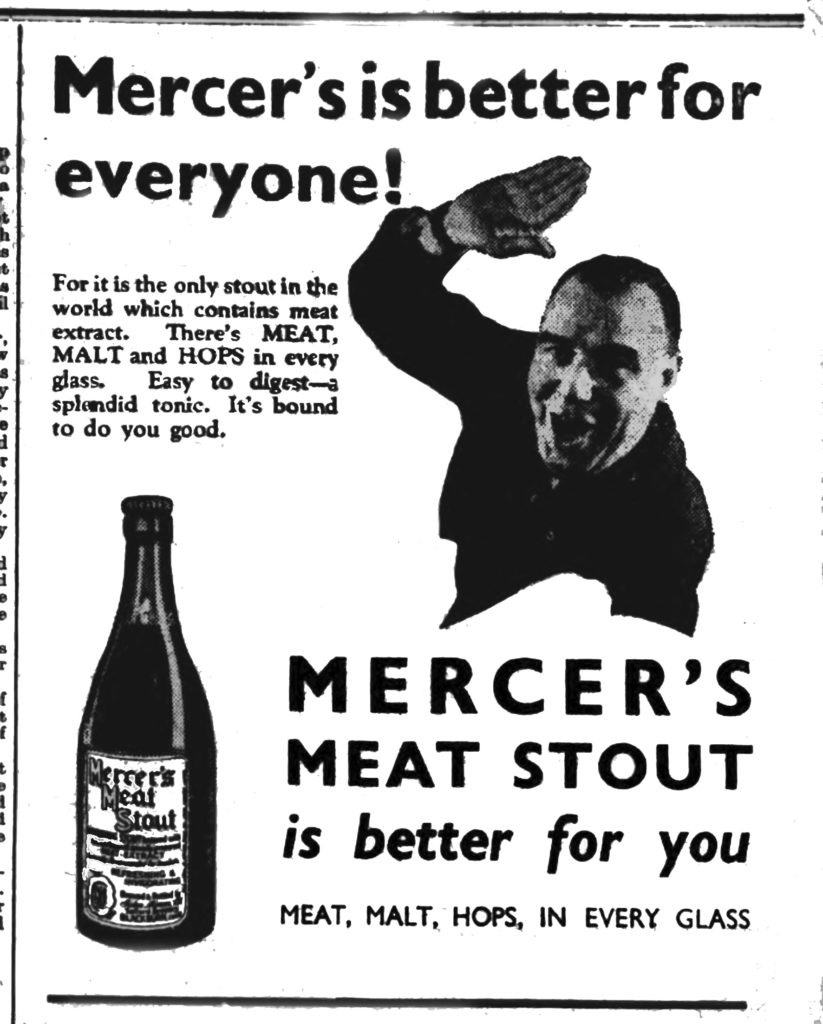
Mercer’s Meat Stout must be the weirdest beer ever brewed by a mainstream British brewer. It first appeared just before the First World War, and early advertising claimed that it was “brewed with the addition of a specially prepared meat extract.” It was introduced by Harold Irving Mercer, son of the founder of the Plough brewery in Adlington, Lancashire, John Mercer, who had died in 1907, and advertised in 1914 as “The Body Building Beverage for Brain Bone and Blood”.
It was part of a trend for “nourishing stouts” in vogue since a London wine merchant named George Raggett passed off Truman’s stout as “Raggett’s Nourishing Stout” in 1860, and which had seen “invalids’ stout” appear as early as 1861, “nursing stout” in 1867, “oat malt stout” (celebrated for its restorative properties) in 1895, and milk stout (“anti-rheumatic, energising”) in 1909.
Mercer’s was taken over by its bigger rival, Dutton’s of Blackburn, ten miles to the north, in March 1929, and the following month someone (presumably Mercer’s head brewer, perhaps Harold Mercer him self) typed up, or had typed up, a complete seven-page document headed “Meat Stout Brewing”, clearly instructions for Dutton’s on how to produce what was a popular beer in Lancashire. Mercer’s brewery closed in 1936, and the brewing of meat stout continued at Dutton’s Salford brewery in Bow Street, Blackburn until around 1943: it was still on sale in April 1942, priced at one shilling and five pence for a pint bottle, 9½ pence for a half-pint, against Mackeson milk stout and Guinness at one shilling and sixpence per pint bottle and Whitbread’s Oatmeal Stout and John Smith’s Milk Stout at one shilling and four pence a pint.
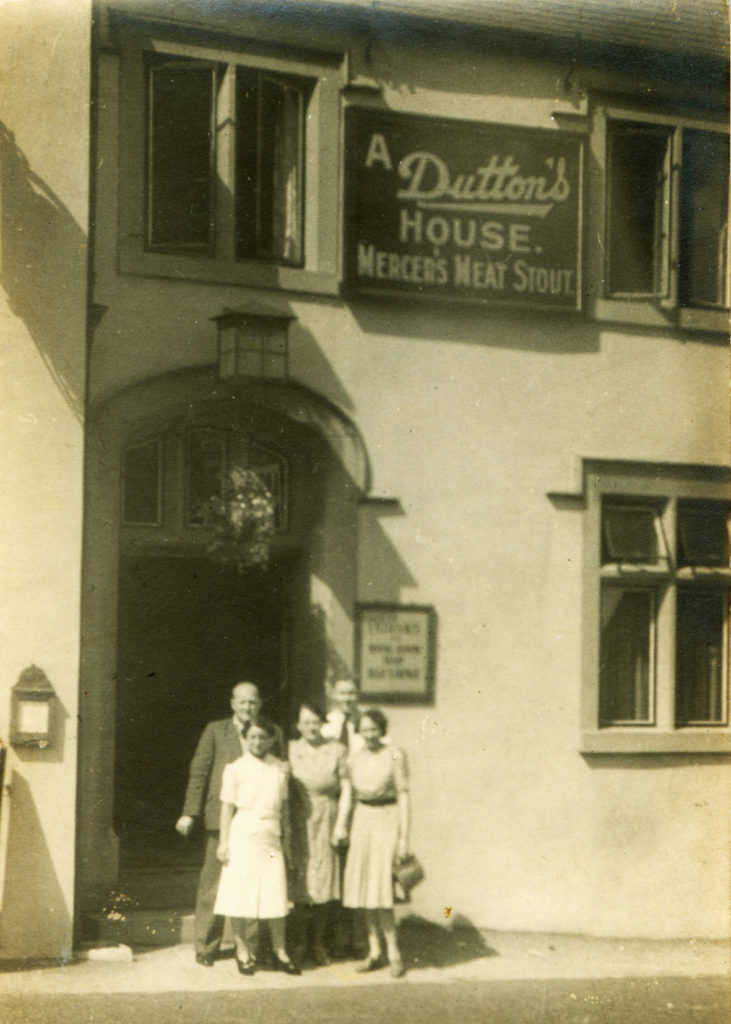
Quite likely the end came because of the increasing difficulty in the middle of the Second World War of getting hold of the large quantities of the tightly rationed sugars of various types that went into the brewing of meat stout: more than 14 pounds to the barrel. (Harold Mercer died in October 1943, aged 64, at his home in Bare Lane, Bare, Morecambe, meaning his best-known beer disappeared off the planet around the same time that he did.)
The recipe remained in Dutton’s possession even after meat stout stopped being made, and when the brewery in Blackburn closed in 1978, 14 years after it had been bought out by Whitbread, a brewer at Bow Street named Derek Malcolm Dixon decided that he did not wish to transfer to the new Whitbread brewery at Salmesbury and, though only 50, he would take his pension – and the recipe – and retire. (Today Salmesbury is owned by AB InBev and produces Stella and Bud.) Derek died a few years later, aged just 58, and the recipe for meat stout that he had removed from work was inherited, along with a couple of brewing books and a hydrometer, by his son Phil.
Phil then misplaced the recipe for more than 30 years, until the boom in craft brewing spurred him to look for it and, when he found it, to take it to a local craft brewery, Three B’s, based at the Black Bull inn, in the countryside just outside Blackburn, to see if they would like to try to reproduce it. Brewery founder Robert Bell and his son Mark did their best with matching the original ingredients from 1929, which included more than 200 pounds of something called “meat extract caramel”, made by the food additives and flavourings manufacturer A. Boake, Roberts & Co of Stratford, East London, which disappeared about the same time that Dutton’s brewery did.
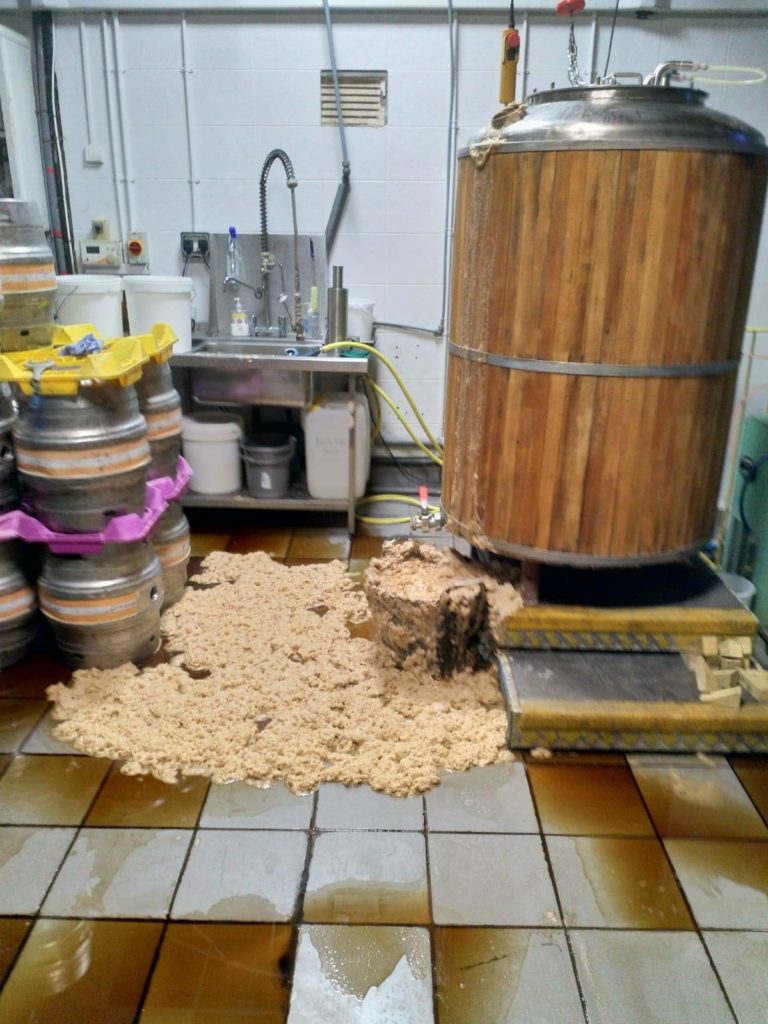
Not having “meat extract caramel”, the Bells improvised with Bovril: two catering packs-worth, 900 grams in all, added at the whirlpool stage. The recipe they came up with also included pale Maris Otter malt, roast barley, black malt, wheat malt and treacle, with Goldings, Fuggles and Northern Brewer hops. The yeast certainly appreciated the Bovril: when Rob Bell came back three hours after pitching, it was “going a bit daft,” in his own words, with a river of foaming, frothing yeast pouring from the four-barrel fermenter all over the brewhouse floor.
The final result was a 5.5 per cent abv deep black stout with a fine creamy head, and complex layers of flavour, matching sweetness with bitterness, and a touch of dryness in the finish. The Bells called it Winter Warmer Stout, rather than meat stout, worrying that drinkers would be put off by the name, but the reaction in the Black Bull pub from customers has been highly enthusiastic, and Phil Dixon is delighted: “I’m over the moon with the beer – I couldn’t have expected it to be any better, they’ve done a really good job of brewing it,” he told me. Phil is one of the few people around to be able to make any sort of comparison with the Mercer’s Meat Stout of old: his father was a home-brewer after he retired, and “as far as I’m aware this is one of the recipes he brewed at home. I remember tasting a brew that can’t have been anything else, it was very similar.
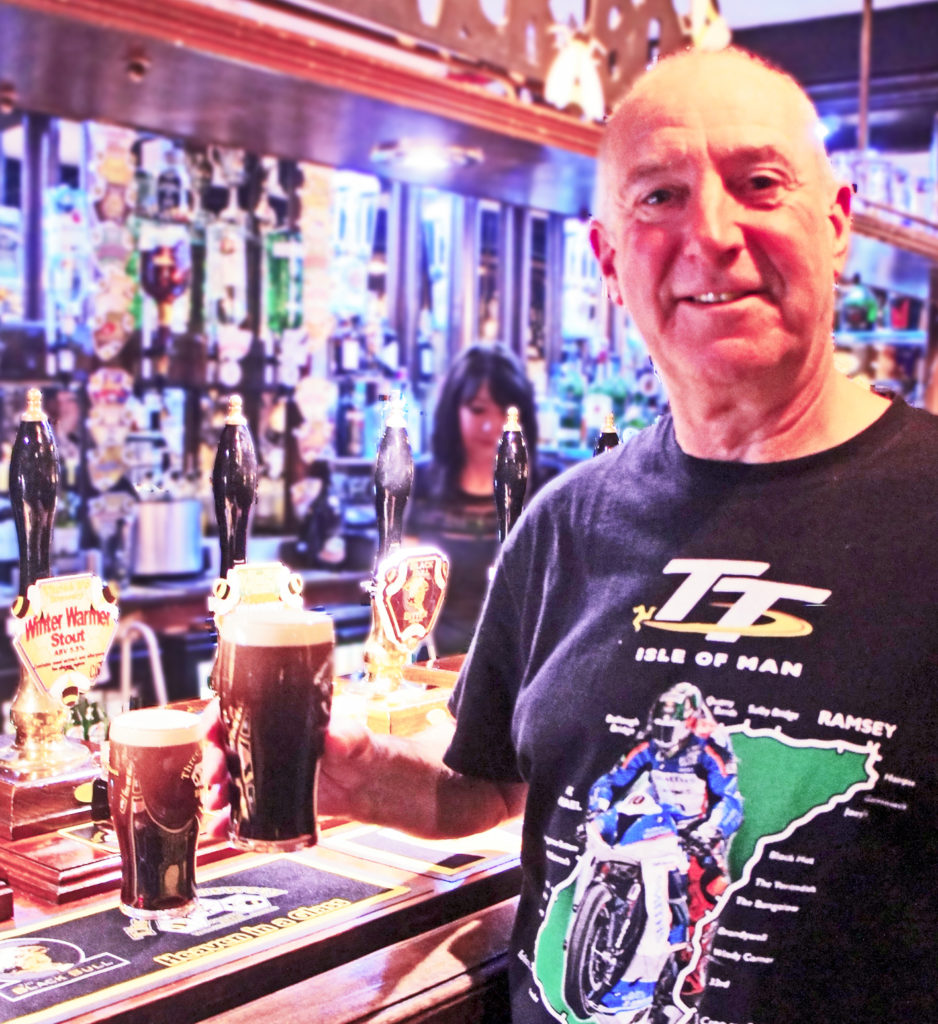
“It was mashed in a bath, and then the wort was transferred into one of those top-loading washing machines to be boiled with hops, and then it was pumped out and fermented. So we couldn’t have a bath for a week and we couldn’t wash our clothes.”
Although the Three B’s brewery, which is now 20 years old, though it only moved to its present site a former Daniel Thwaites pub, in 2011, delivers its beers to 30 or 40 pubs a week, the revived Mercer’s Meat Stout will only be on sale at the Black Bull. If you want to try it, be warned that the pub is closed Mondays and Tuesdays and only open from 4pm Wednesdays to Fridays, though it opens at noon on Saturdays and Sundays. The Black Bull does not serve food, and it has no televisions and no fruit machines – “it’s a talking pub,” Mark Bell says.
The original recipe, meanwhile, is a fascinating document, revealing much about the methods used by a small North of England brewer in the 1920s. Three different types of coloured malt went into Meat Stout, for example, amber, black and crystal, made by Charles E. Seed Ltd of Clayton, Bradford, Yorkshire, and the recipe is firm about their use: “These Patent Malts should be mashed within about 48 hours of being roasted. Seeds send them to us newly roasted specially for each brew by passenger train [a journey of some 40 miles]. We pay half the carriage. (note: Black Malt is NOT mashed. It is added to copper at start of second 50-minute boil.)” Those three made up seven per cent of the grain bill each: 68 per cent was “high dried” Norfolk and Californian malt from the Leeds maltsters W.J. Robson & Co, and 11.5 per cent was flaked maize from the Liverpool Malt Co Ltd.
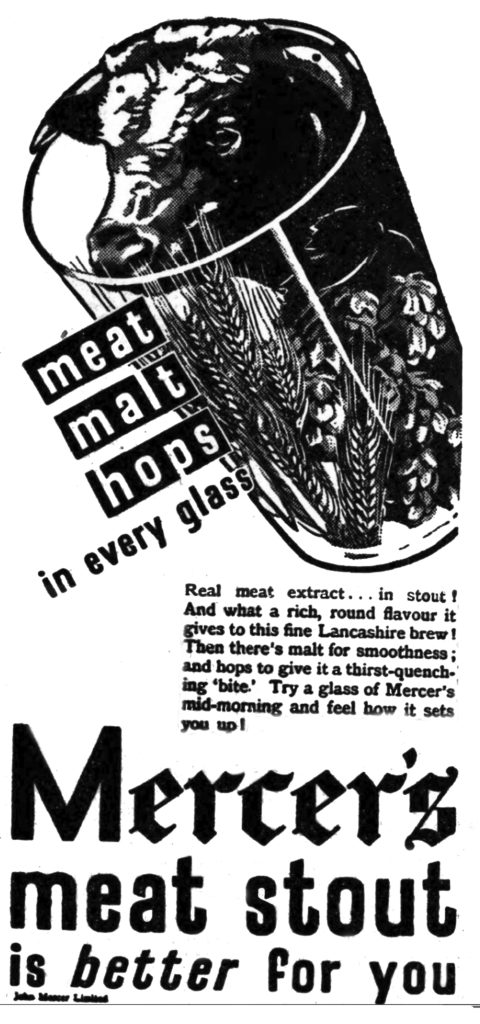
The hops were a real mix, though annoyingly the author of the recipe gave only the geographical origins of the hops used, not their varieties: not quite a quarter 1928 Worcesters, the same amount of 1928 Kents, 15 per cent each 1927 Kents and Worcesters, nine per cent 1927 “Continentals”, the same amount of 1927 “Oregons” (possibly Fuggles, through probably Clusters), three per cent 1925 Oregons and three per cent “sundry pieces to use up end of pockets”. There were also 18 pounds of “stew hops”, a mixture of 1928 “choicest” Worcesters and Kents, which were placed in a bag with a chain attached and hung in the copper for 20 minutes after the 110-minute boil was over, to be retained and reused in the next brew; and 4½ pounds of White, Tompkins & Courages Hop Concentrate, equivalent of 54 pounds of leaf hops, to give 192 pounds of hops for 80 barrels, or two pounds 6.4 ounces of hops per barrel.
Other wacky ingredients in the recipe besides that mysterious “Meat Extract Caramel” (Boake, Roberts & Co’s records are at Hackney Local Archives, apparently: time for a trip to East London) are “copper wort adjunct” from George Clark & Son Ltd of Millwall Docks in London, “a slowly fermentable sugar for use in the copper with all types of beer”, designed to give palate-fulness at a lower gravity; “Jetose Caramel”, which looks to be a typographical error for “ketose caramel” (j and k are adjacent on the keyboard) from the Liverpool sugar manufacturer Harvey Steel; and “block juice”, “a solid block, resembling coal, but with the overpowering liquorice flavour and bitter-sweet taste”, from the Manchester-based chemists J. Woolley Sons & Co. It is notable, though of course, not surprising, that most of the suppliers were from the North of England.
Other points from the recipe: the stout was dry-hopped at a rate of two ounces of 1928 Worcesters, two ounces of 1928 Kents and 1½ ounces of 1927 Oregons per barrel for the draught version and five ounces of 1928 Worcesters, two ounces of 1928 Kents and three ounces of 1927 Oregons per barrel for the bottled version, and the draught version was primed with around two pints three fluid ounces of 1148ºOG priming solution to give a gravity equivalent to 1056º; and the bottled stout was delivered “as near as is practical … new bottled to the customer. The ideal is to bottle it and load it on the motors direct off the bottling machine.”
Very many thanks indeed to Phil Dixon’s late father
for preserving the recipe for Mercer’s Meat Stout, and to Phil for finding it
again and persuading the Three B’s brewery to reproduce it, and then telling me
about it (this is not such a great scoop as I thought it was at first, as there
is apparently a version of the recipe in the Whitbread archives, and Brian
Glover mentions it in one of his books, though it appears to be two pages
shorter than the Dixon version) and very many thanks to Rob and Mark Bell for
picking me up at Blackburn Station, driving me to the Black Bull and filling me
with excellent stout. I very sincerely hope this will not be the last time we
see Mercer’s Meat Stout on a bar top again.
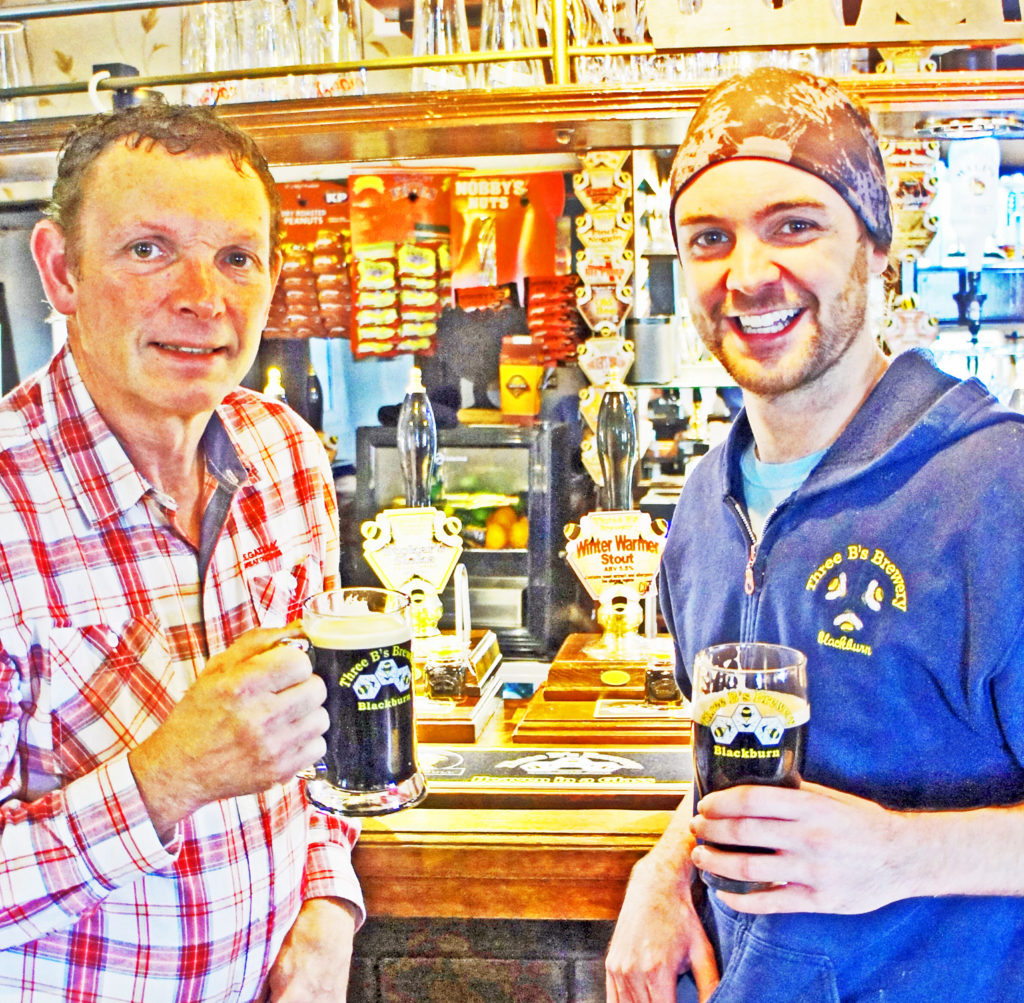
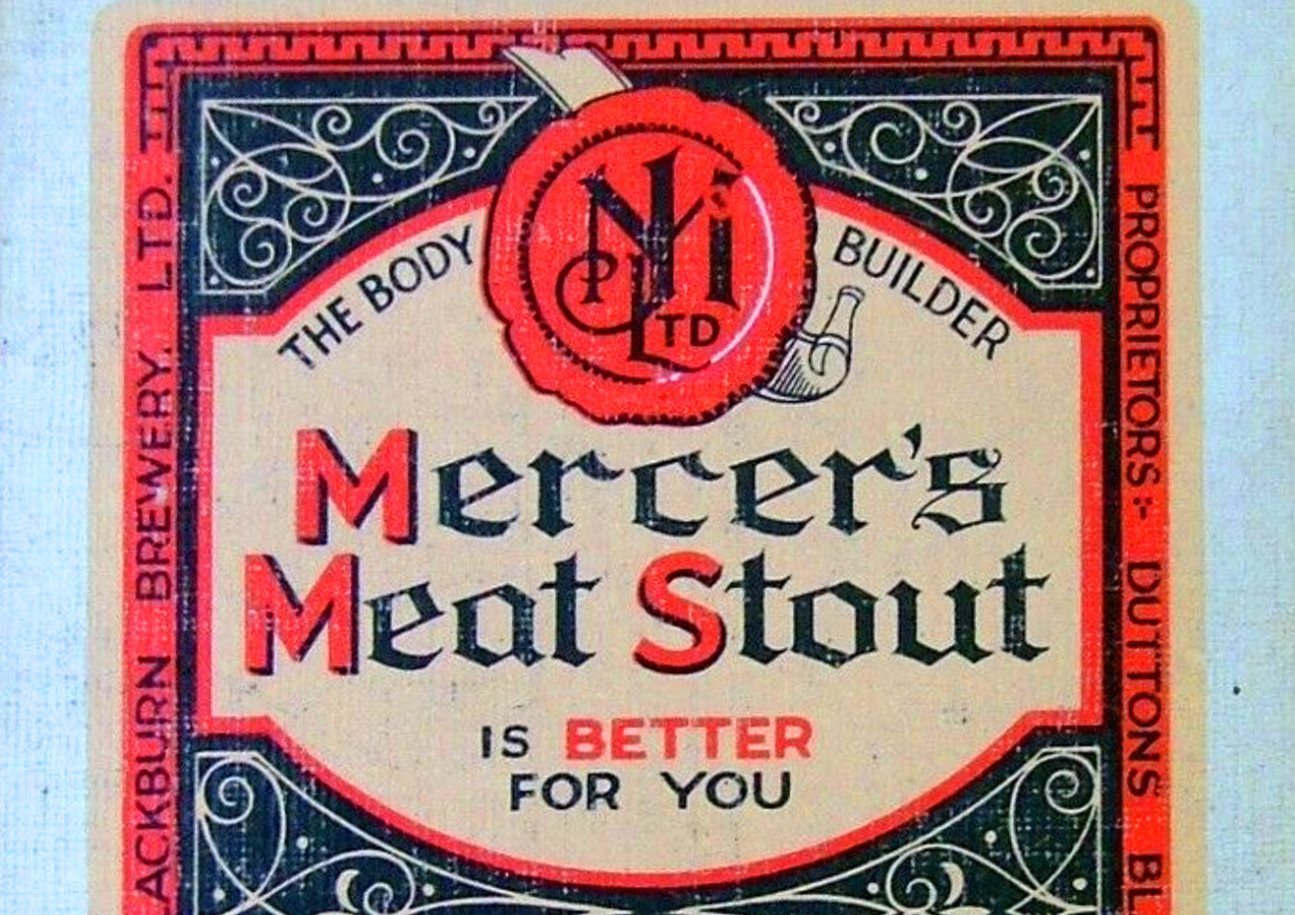

I did not know that 3Bees was still around. I used to buy their bottles from Booths in Knutsford. Keen to try this.
Excellent tale, Martyn – well done to all concerned.
If anything could get me up to Blackburn, it sounds like this beer in this pub (a talking pub – love it) would be the thing that would.
Hi Martyn, For a home-brewer across the pond who wants a reproduction, what was the total beer volume per 900 g Bovril? I would guess the fermenter in your photo (a Peter Austin system?) was maybe 4 or 5 UK barrels. If so, I would guess that Bovril had a very subtle contribution.
‘Twas indeed a four-barrel fermenter. The system was put together by Rob Bell, who previously worked as an engineer.
I drank a meat stout at Beer Nouveau in Manchester in 2018.
Of course, there was the unofficial version brewed a few years ago by Steve Dunkley at Beer Nouveau, before the brewery went vegan, using the Dutton’s Bovril, and not the sideof beef.
People keep mentioning this, but nobody has said where Steve got his recipe from, and what he used as his “meat” ingredient. Anyone know?
I was just checking for acknowledgement that this style was revived for a one off three years ago by Beer nouveau. Proof from untappd – https://untappd.com/b/beer-nouveau-meat-stout/2281500
Without more details of provenance, recipe, etc, acknowledgement is not possible
My Godmothers father was Samuel Pilkington he was Head Brewer at Mercer’s Brewery at Adlington and brought the recipe over with him to Blackburn he was also Head Brewer at Dutton’s
Fabulous, Ann, thank you so much for that information:do you know the years Samuel Pilkington worked at Dutton’s?
[…] to enjoy in Martyn Cornell’s account of being whisked away to Blackburn, Lancashire, to drink a stout brewed with Bovril but our very favourite bit is Phil Dixon’s account of his Dad’s home-brewing […]
Brilliant article – I can’t wait to sample the beer on my next trip up to Blackburn as John Mercer was my great-grandfather.
How very fabulous, Christine – thank you so much for commenting, do introduce yourself to the guys at the Black Bull, they’ll be delighted to meet yu.
[…] dieta. Attenzione però, perché non mi sto riferendo a produzioni decisamente particolari, come la storica Mercer’s Meat Stout realizzata estratto di carne o l’eccentrica Voodoo Doughnut Maple Bacon Ale del birrificio […]
Off-topic, but I would like to say how glad I am to have found your blog. It’s so refreshing to read about beer history from someone who actually knows how to handle evidence. I’m a newcomer to the world of beer, but it didn’t take me long to get frustrated with unevidenced just-so stories floating around everywhere.
Thank you: when I first started doing this, which is around 25 years ago now, I made a vow that I would never repeat a story that I could not find evidence for. Gradually it became clear that there were vast evidential holes at the heart of too many of people’s favourite stories about beer. But sorting out the truth has been great fun.
I think Bessie Mercer daughter of Harold Mercer was my grandmother. She lived in Cheshire and died before I was born.
I shall have to try some Mercer’s Meat Stout!
Very nice to hear from you, Rachel. Any iold photographs in the family archives?
Reply to Rachael – John Mercer was my great grandfather. I have been researching the Mercer family for many years & have a lot of information about them. Email me on swynw@aol.com if you are interested. Christine Williams
[…] The legendary Mercer’s Meat Stout returns after 75 years […]
[…] https://zythophile.co.uk/2019/11/20/the-legendary-mercers-meat-stout-returns-after-75-years/ […]
Great story and great name for your web-site. My grandfather was Harold Irving Mercer and I have a copy of the original recipe. Good to see Mercer’s Meat Stout being brewed again. My son once tracked down all the ingredients even to the level of the composition of the water, but we have never got round to making it. Perhaps one day there may be a brew in Australia,
Very good to hear from you, Graham. Did your son find out much about the caramel used in the beer?